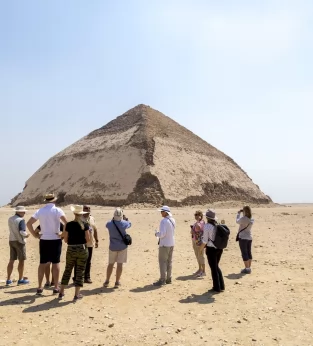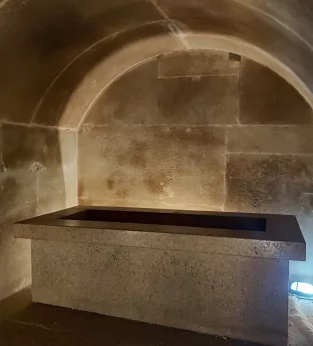Stay updated!
Welcome to Inside Egypt, where we redefine luxury travel experiences with our exceptional tours of the Step Pyramid of Djoser and Saqqara. The also called Step Pyramid is very important because it is the earliest colossal stone building and the first pyramid ever built. It represents a significant advancement in architectural and engineering techniques during the Old Kingdom period in ancient Egypt. Saqqara itself is an ancient necropolis and a UNESCO World Heritage site, renowned for its numerous pyramids and tombs.
We invite you to embark on a journey like no other, where history, culture, and opulence intertwine to create an unforgettable adventure. At Inside Egypt, we pride ourselves on offering a level of service that surpasses standard travel experiences.
Our luxury Pyramid of Djoser tour is meticulously curated to provide you with an extraordinary and immersive encounter with ancient Egypt. One of the key features that sets Inside Egypt apart is our team of Egyptology Experts. Your personal tour guide will be a knowledgeable and passionate professional who will bring the ancient world to life with captivating stories and insights. Our tour guides are dedicated to ensuring that every moment of your tour is enriched with in-depth historical and cultural context.
Experience the awe-inspiring architecture up close, marvel at the intricate details of the pyramid's design, and uncover the secrets of its construction during our tour.
In addition to our premium guided tours, Inside Egypt offers a range of luxurious amenities and services to enhance your experience. From private transportation in lavish vehicles to gourmet dining experiences featuring exquisite Egyptian cuisine, we go above and beyond to cater to your every need.
Whether you are a history enthusiast, an avid traveler, or simply seeking a truly extraordinary adventure, Inside Egypt's luxury Pyramid of Djoser tour will exceed your expectations. Immerse yourself in the grandeur of ancient Egypt with us and create memories that will last a lifetime.
To embark on this remarkable journey, book one of our Egypt tours now and let Inside Egypt guide you through an unparalleled luxury tour of the Step Pyramid of Djoser.
Join Inside Egypt and see the Step Pyramid in person on our Pyramid of Djoser tour!
Photos of the Pyramids in Saqqara
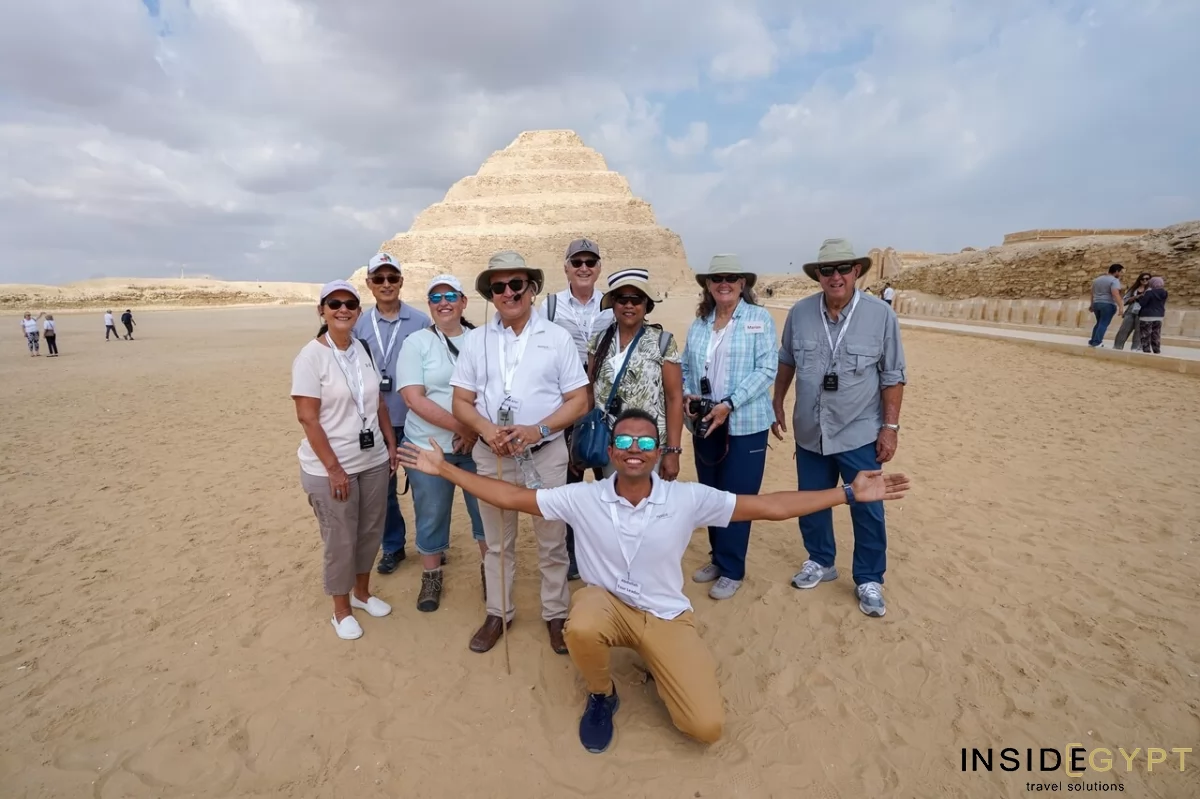
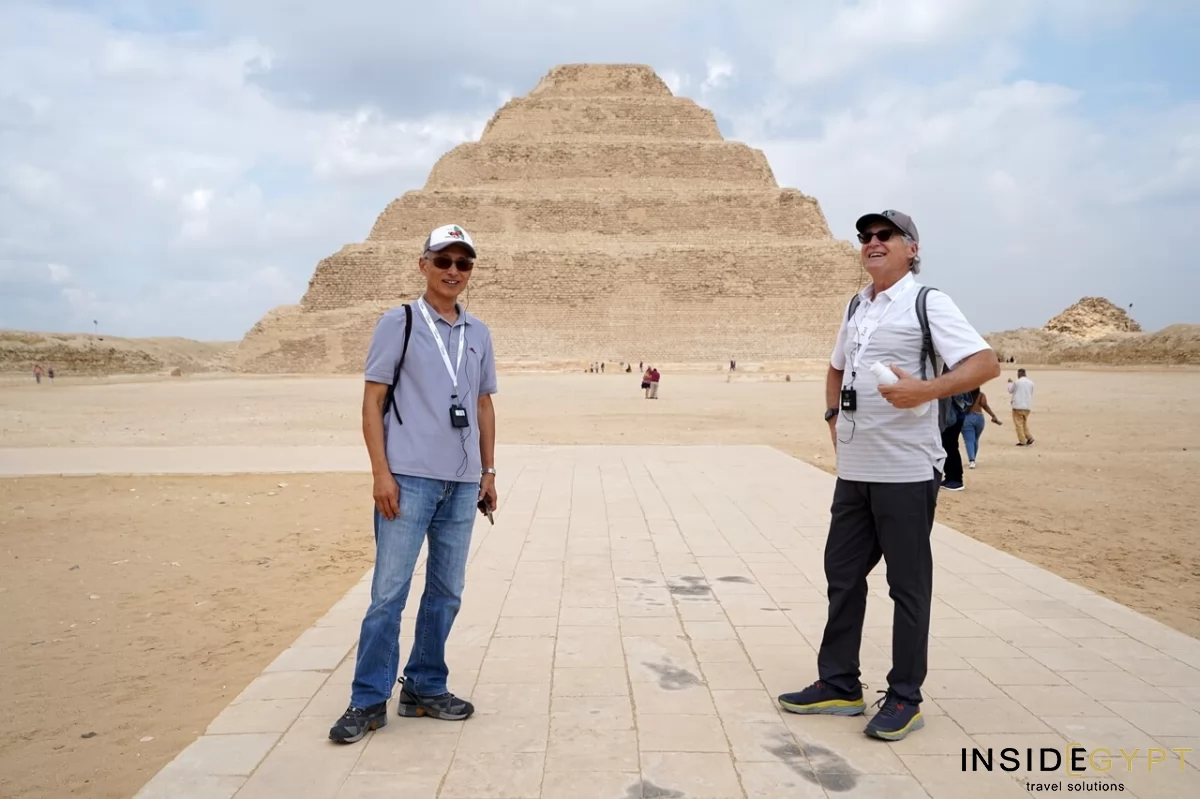
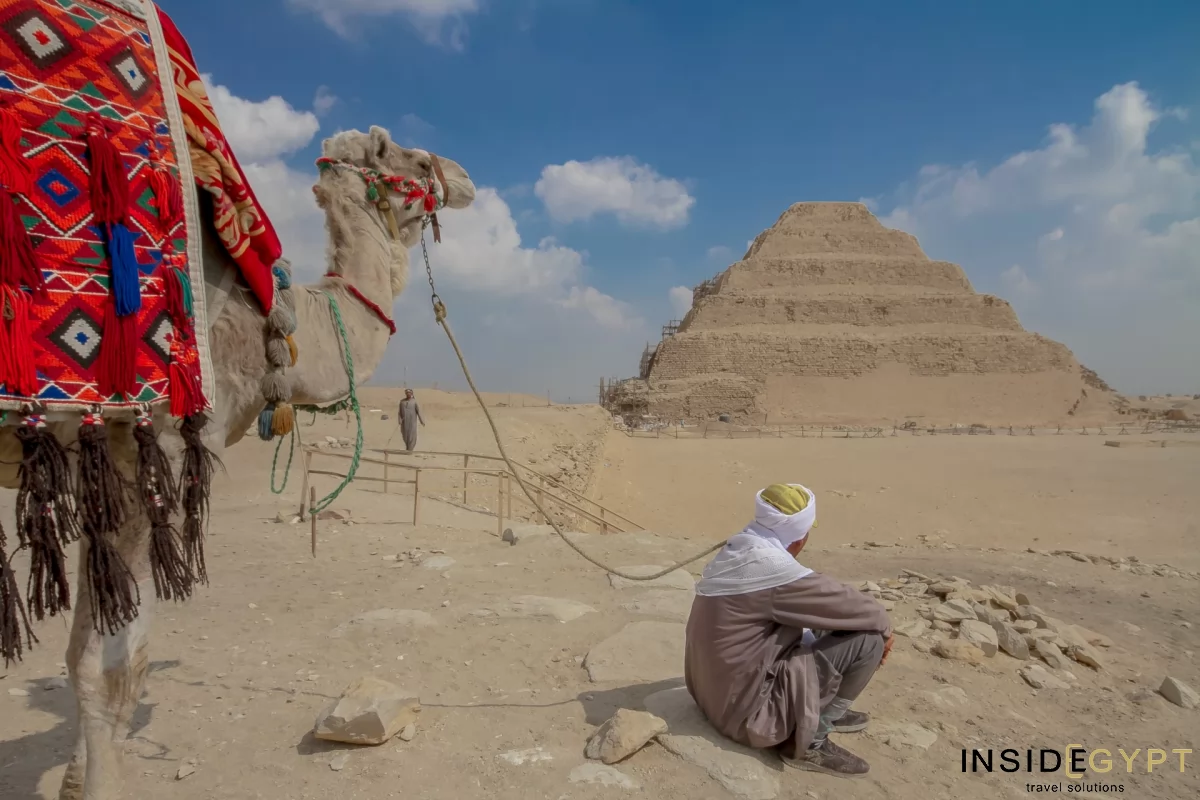
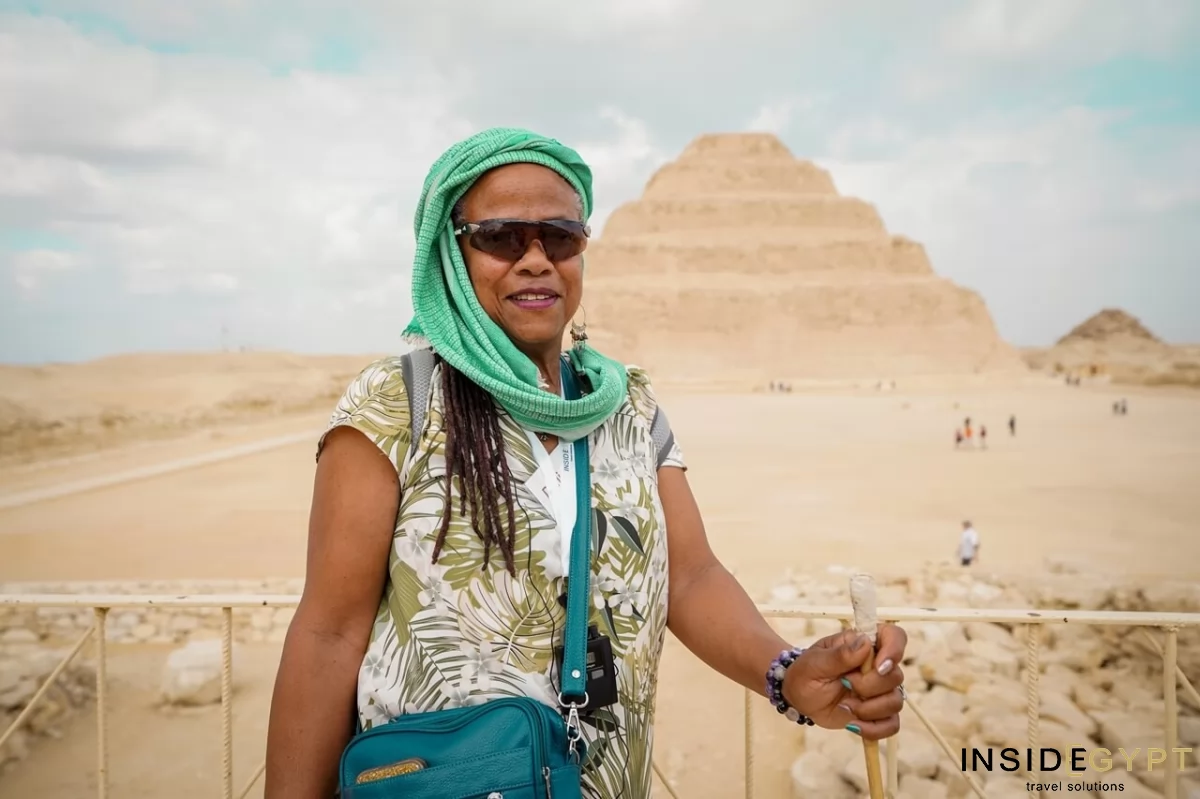
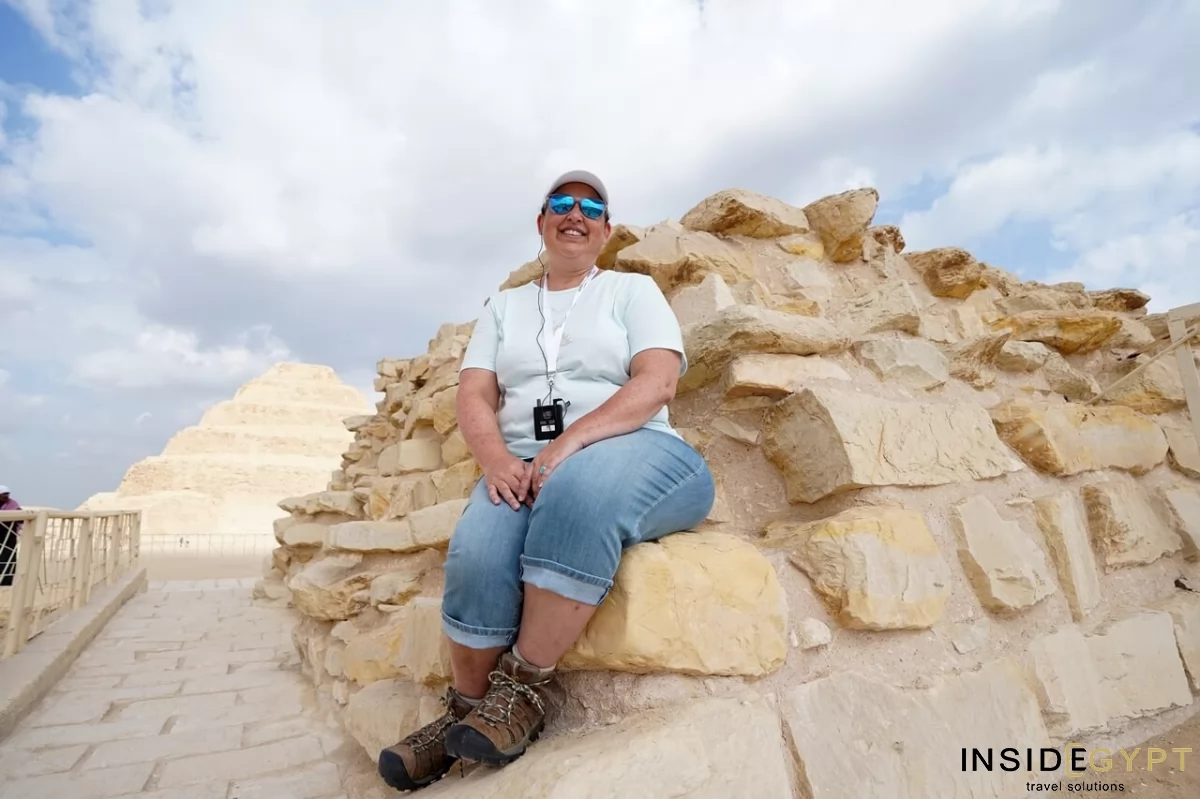
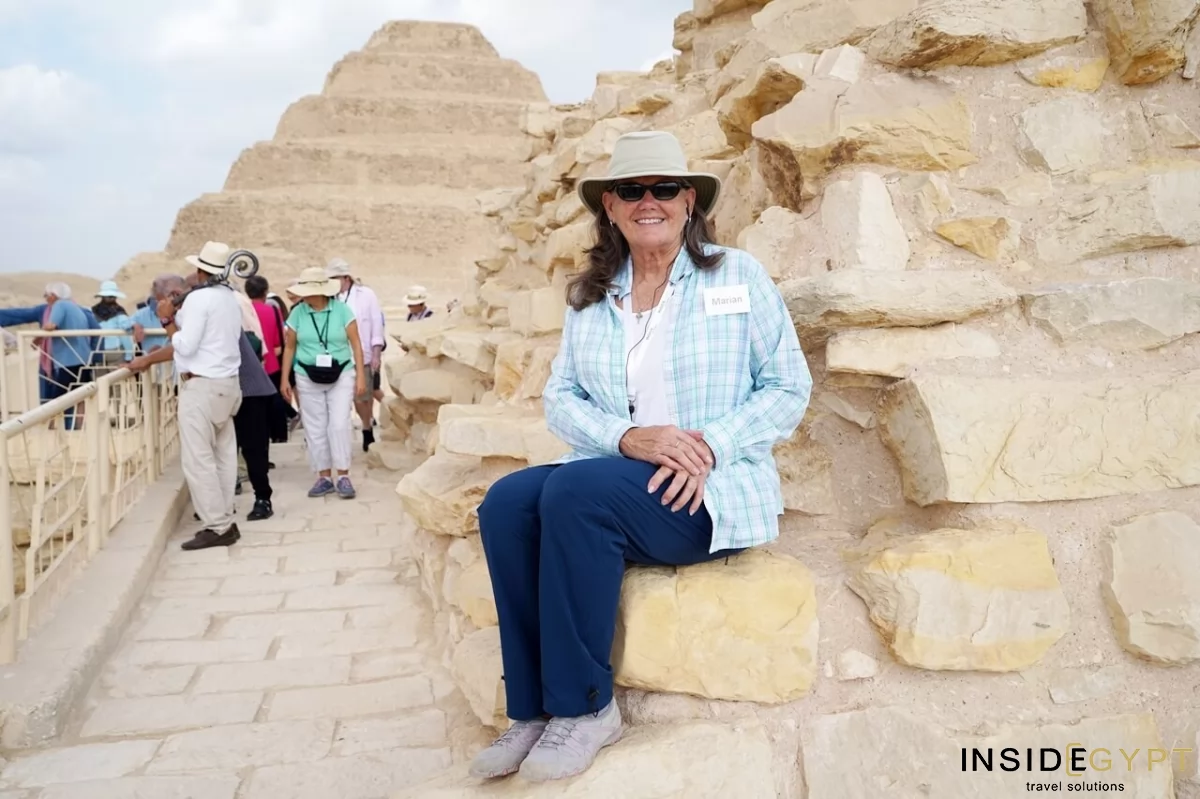
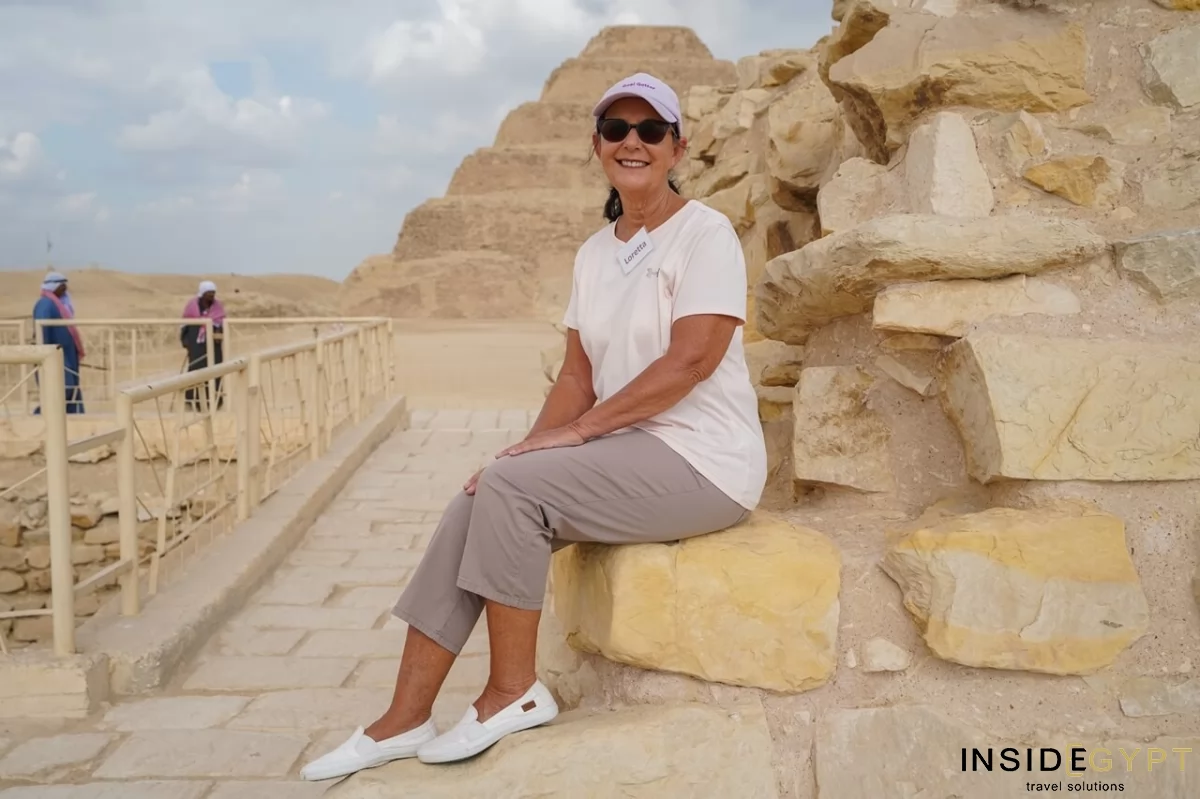
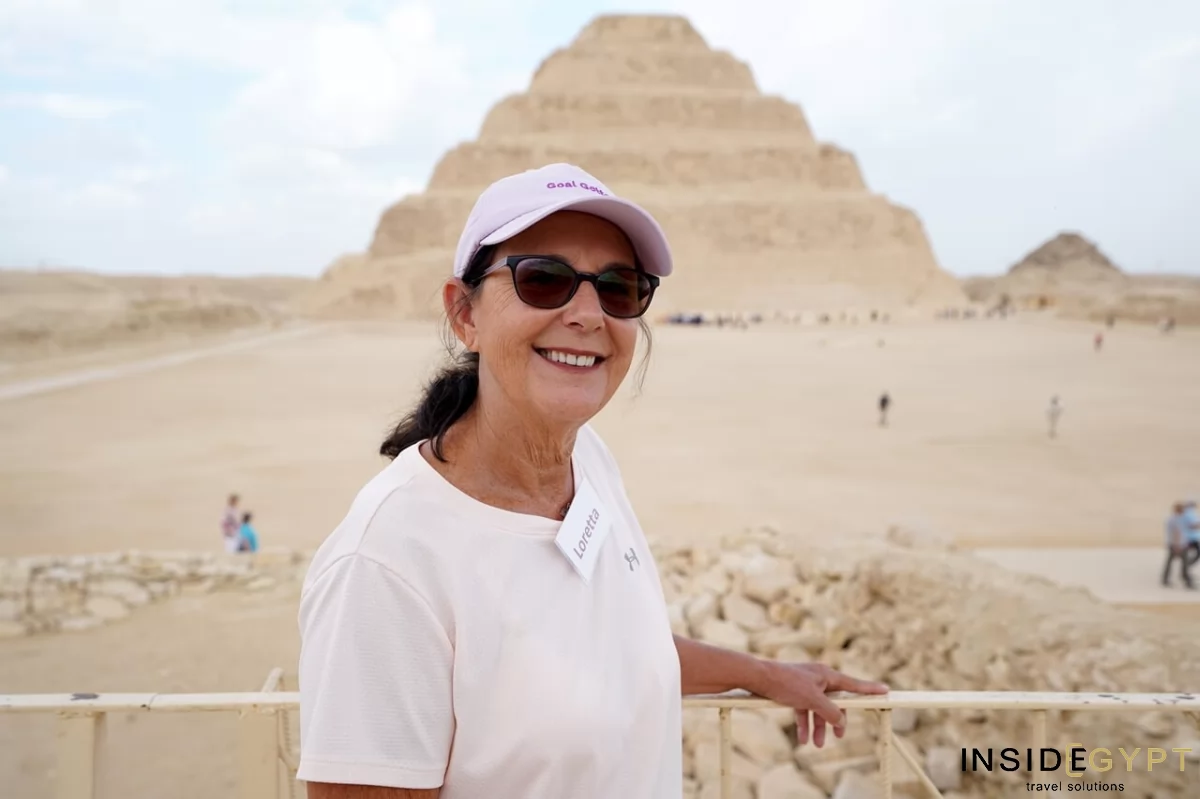
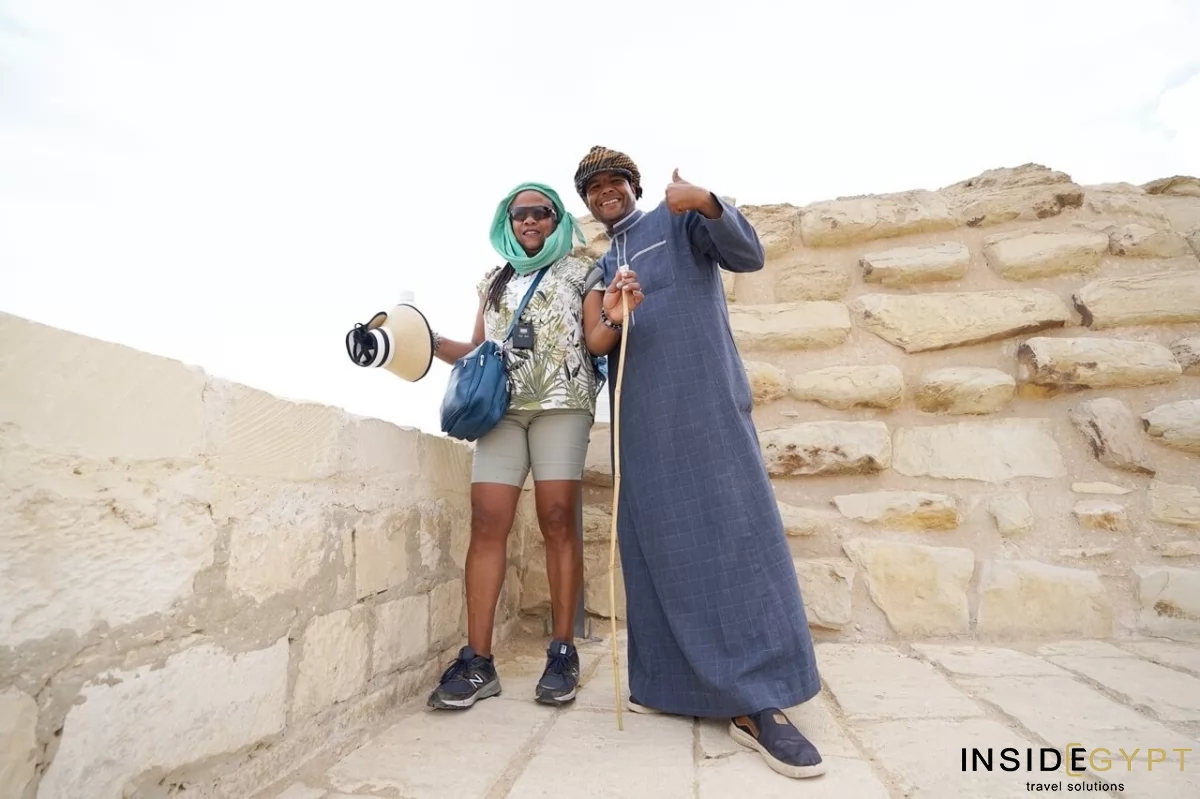
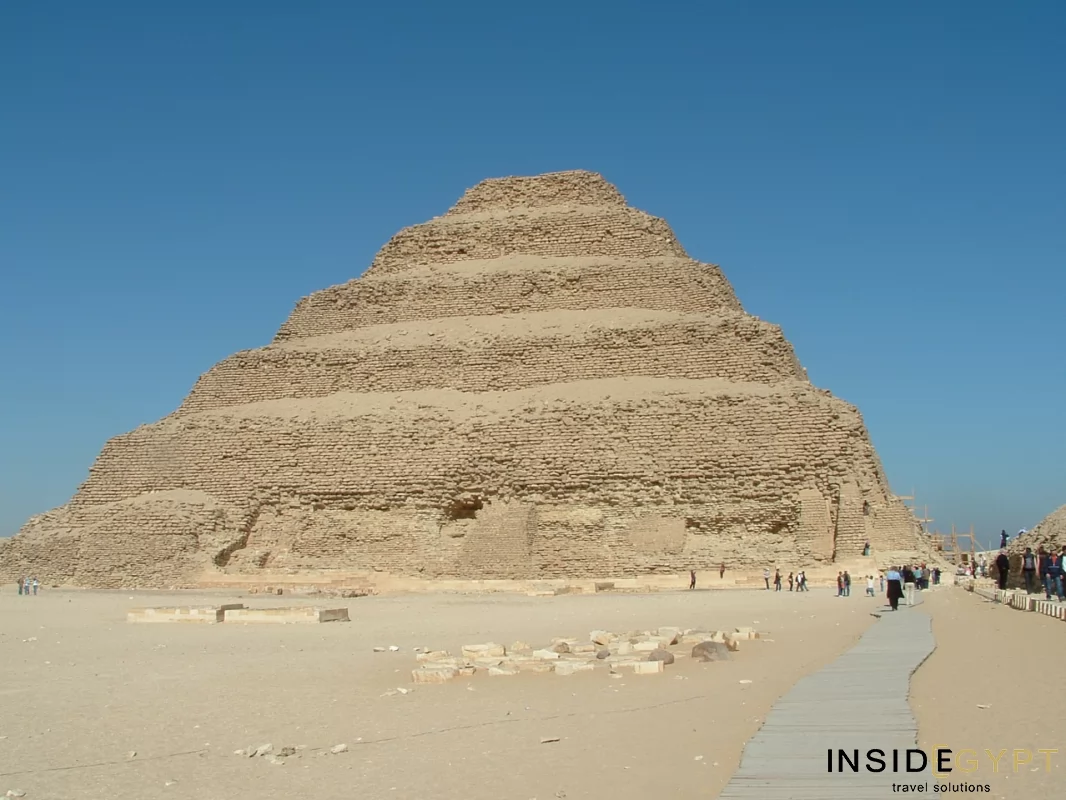
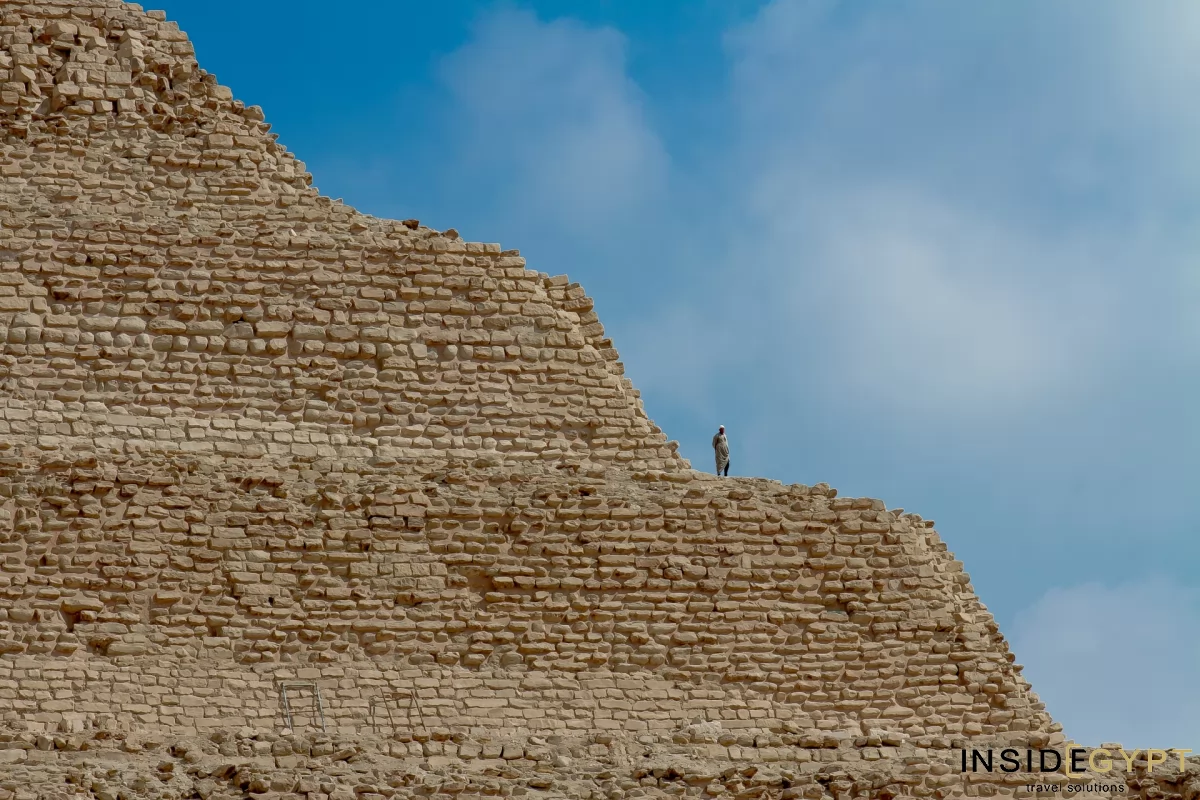
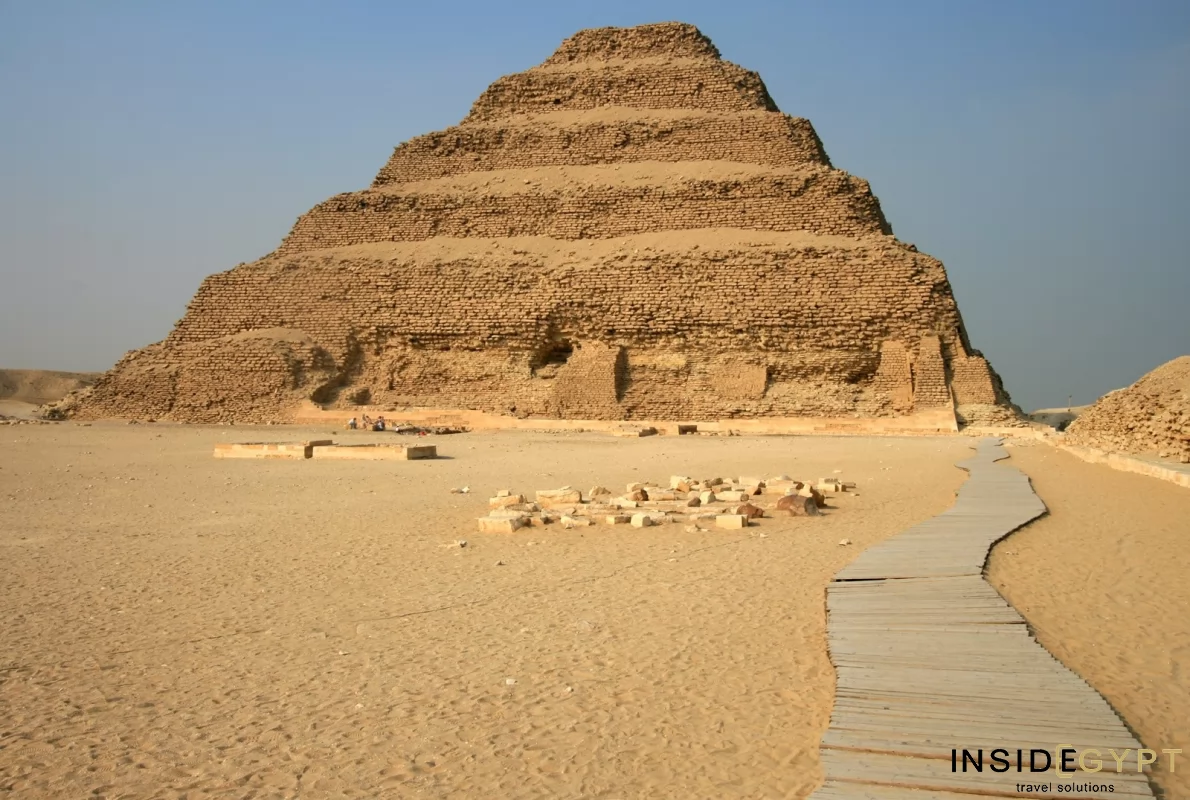
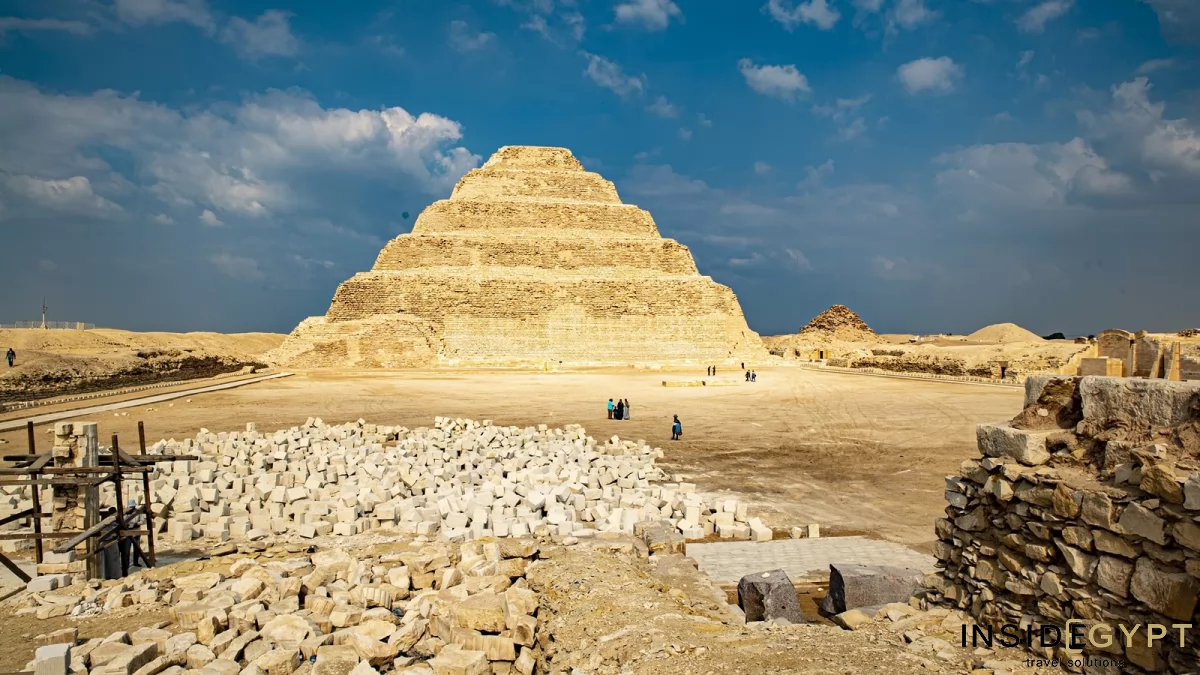
Discover Our Exclusive Egypt Tours
Tour Reviews
FAQ About Djoser’s Pyramid
When was the Pyramid of Djoser built?
.webp)
The Pyramid of Djoser, also known as the Step Pyramid, was built during the 27th century BCE in ancient Egypt. It is located in Saqqara, near Cairo. The construction of the pyramid is attributed to the Pharaoh Djoser, who was the second king of the Third Dynasty of the Old Kingdom. The Old Kingdom is the historical period in ancient Egyptian history that lasted from around 2686 BCE to 2181 BCE. It was characterized by the development of monumental architecture, including the construction of pyramids as royal tombs. Djoser's reign is estimated to have taken place around 2667-2648 BCE, and his pyramid was built during his lifetime as a burial place.
The Pyramid of Djoser represents an important architectural innovation in ancient Egypt. It was designed by Imhotep, an architect, engineer, and high-ranking official in Djoser's court. The pyramid was initially built as a mastaba, which is a flat-roofed rectangular structure with sloping sides. Over time, Imhotep expanded it by adding six more mastabas on top of each other, creating the step-like structure that gives the pyramid its name.
The construction of the stepped Pyramid of Djoser marked the transition from the earlier royal tombs, which were simple mastabas, to the more elaborate and monumental pyramids that would become iconic symbols of ancient Egypt. It set a precedent for the subsequent pyramid construction during the Old Kingdom and influenced the architectural development of future pyramids, such as the famous Pyramids of Giza.
Who built the Step Pyramid of Djoser?
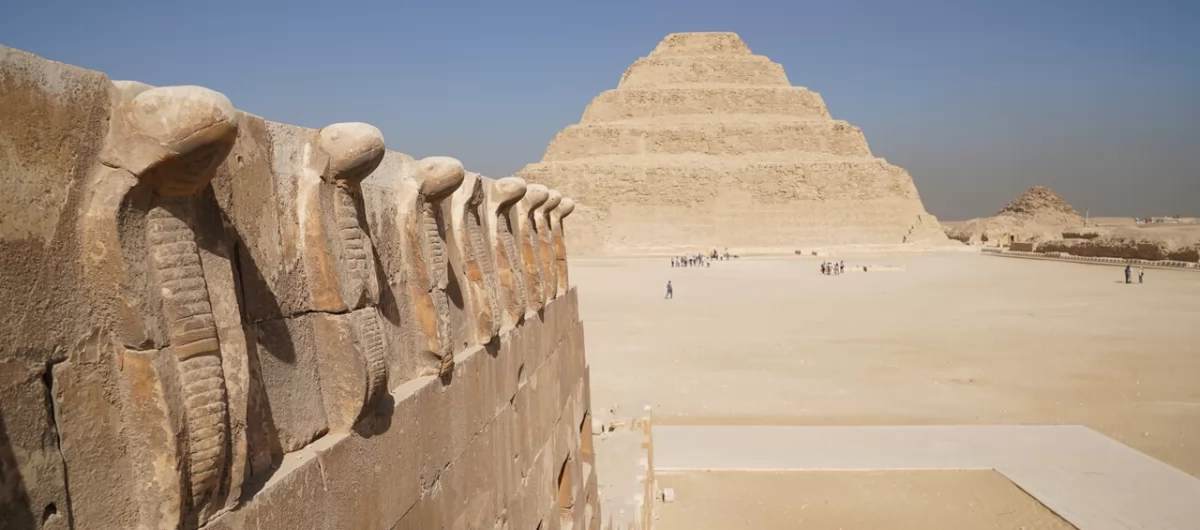
The Step Pyramid of Djoser, also known as the Step Tomb, was designed by the renowned ancient Egyptian architect Imhotep. Imhotep was a polymath and a highly esteemed figure in ancient Egyptian history. He served as a chancellor to Pharaoh Djoser, who ruled during the 27th century BCE in the Third Dynasty of the Old Kingdom. Imhotep's exceptional architectural vision and engineering skills played a crucial role in the design and construction of the Step Pyramid, located in Saqqara, near Memphis, Egypt. This pyramid is considered one of the earliest colossal stone structures ever built and marks a significant milestone in the evolution of Egyptian pyramid design.
Imhotep's innovative architectural approach when designing the stepped pyramid of Djoser involved stacking six mastabas, which were rectangular tomb structures, on top of each other, gradually diminishing in size. This resulted in a six-tiered structure, giving the pyramid its distinctive step-like appearance. The Step Pyramid stands approximately 204 feet (62 meters) tall and was originally clad in polished white limestone, which would have given it an impressive gleaming exterior. Imhotep's genius extended beyond architecture. He was a highly accomplished individual, serving as a physician, high priest, and scribe. He was revered as a sage and became deified after his death, with a cult dedicated to his worship.
Imhotep's inspiration likely drew from the architectural traditions of his time, including the construction of mastaba tombs and the use of sun-baked mud bricks. He pushed the boundaries of design and engineering, creating a monument in the pyramid of Djoser that was not only a grand tomb, but also a symbol of the pharaoh's power and a testament to the architect's ingenuity.
Imhotep's legacy endured long after his death. He remained a revered figure in Egyptian history, and his architectural innovations influenced the design of subsequent pyramids throughout the centuries. The Step Pyramid of Djoser stands as a testament to Imhotep's brilliance and his lasting impact on ancient Egyptian civilization.
Where is Saqqara and the Pyramid of Djoser Located?
.webp)
Saqqara is an ancient cemetery located in the desert of Egypt, about 30 kilometers (19 miles) south of Cairo, the capital city. It served as the burial ground for the ancient Egyptian capital of Memphis, which was the administrative and political center of Egypt during the Old Kingdom period. Within the vast Saqqara complex, the Pyramid of Djoser is one of the most prominent and significant structures. The Pyramid of Djoser, also known as the Step Pyramid, is considered the earliest colossal stone building and the first pyramid ever constructed in Egypt. It was built during the 27th century BCE for Pharaoh Djoser, the second king of the Third Dynasty of the Old Kingdom. Designed by the architect Imhotep, the Pyramid of Djoser stands as a groundbreaking architectural achievement. The step pyramid consists of six stacked mastabas, or rectangular tomb structures, gradually decreasing in size as they ascend, creating a stepped appearance. This unique design was a precursor to the more familiar smooth-sided pyramids that were built in later periods.The stepped Pyramid of Djoser marked a significant shift in ancient Egyptian funerary architecture, transitioning from simple mastabas to monumental structures like pyramids. It became a model for subsequent pyramid constructions, including the famous pyramids at Giza.
Saqqara, with its numerous tombs, pyramids, and ancient structures, provides a valuable insight into the religious beliefs, burial practices, and architectural achievements of ancient Egypt. Its importance in Egyptian history and its rich archaeological significance have made it a UNESCO World Heritage Site. Saqqara continues to be a popular destination for tourists and historians alike, offering a glimpse into the ancient civilization that flourished along the Nile River. Join Inside Egypt on a Pyramid of Djoser tour to find out more!
What’s inside the Pyramid of Djoser?
.webp)
The Pyramid of Djoser, also known as the Step Pyramid, is located in Saqqara, Egypt, and is one of the most iconic ancient Egyptian structures. Built during the 27th century BCE for Pharaoh Djoser by his architect Imhotep, the Pyramid of Djoser is considered the earliest colossal stone building and the first pyramid ever constructed.
In 2020 after many years of renovation, the interior of this famed pyramid in Saqqara was opened to the public. There are several fascinating features and insights that can be gleaned from the structure of the Pyramid of Djoser. Beneath the Step pyramid lies an extensive network of underground tunnels and chambers. These were originally built to house the burial goods and offerings for the pharaoh's afterlife. The step Pyramid of Djoser complex is believed to include storage rooms, chapels, and corridors. The burial chamber of Djoser inside the Pyramid of Djoser is situated deep within the step pyramid. The pharaoh's burial chamber is a small, rectangular room made of limestone, and it once held the pharaoh's sarcophagus. The sarcophagus, however, was found empty, suggesting that the tomb was looted in ancient times.
The Step Pyramid of Saqqara is an architectural marvel with six stacked mastabas (rectangular structures with sloping sides) that create a stepped appearance. The Pyramid of Djoser rises to a height of approximately 197 feet (60 meters). Visitors can marvel at the precision and craftsmanship of the step pyramid's construction as they explore the exterior. The Pyramid of Djoser is part of a larger funerary complex that includes courtyards, temples, and smaller pyramids. Visitors can explore these structures, such as the Mortuary Temple, which features stunning reliefs and columns adorned with intricate carvings.
The Pyramid of Djoser has undergone extensive restoration to preserve its historical significance. In recent years, this complex has been reopened to the public, allowing visitors to witness the grandeur of this ancient monument.
When embarking on the Pyramid of Djoser tour, tourists can expect an immersive experience that combines awe-inspiring architecture, ancient history, and the opportunity to explore the surroundings. The interior and the exterior of the pyramid with the surrounding structures offer a glimpse into the remarkable achievements of ancient Egyptian civilization.
What are some other facts about Djoser’s Pyramid?
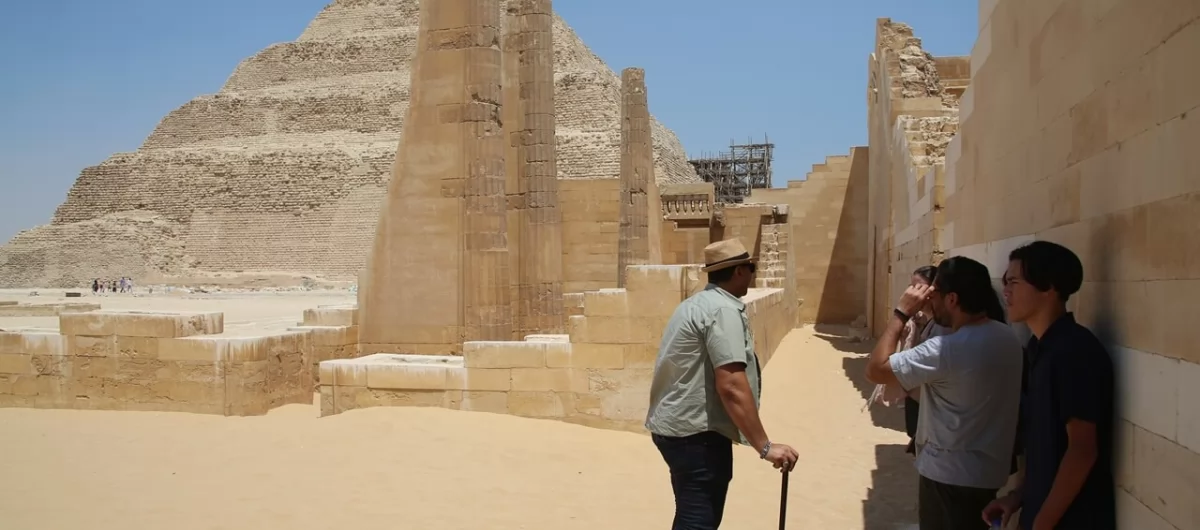
The Pyramid of Djoser, also known as the Step Pyramid, is one of the most significant architectural achievements of ancient Egypt. Here are some additional facts about the Pyramid of Djoser that make it a fascinating destination for tourists:
It is considered the earliest colossal stone building and the oldest pyramid in Egypt. The Step Pyramid was built during the 27th century BCE, during the Third Dynasty of the Old Kingdom.
The Step Pyramid was designed by Imhotep, an architect, physician, and priest who served as a chancellor to Pharaoh Djoser. Imhotep's innovative design of the Djoser Pyramid marked a departure from the earlier mastaba-style tombs, featuring six stacked mastabas to create a step-like structure.
The pyramid stands out due to its distinctive step-like structure, which consists of six mastaba-shaped layers decreasing in size as they ascend. This architectural form served as an inspiration for later pyramid construction in Egypt, including the iconic Pyramids of Giza.
Djoser's Step Pyramid was constructed using limestone blocks, and the Step Pyramid originally reached a height of approximately 62 meters (203 feet). As well as the Step Pyramid, the Djoser Pyramid complex also includes several structures, such as courtyards, temples, tombs, and an underground labyrinth.
Inside the Stepped Pyramid of Djoser's complex, a serdab—a small concealed chamber—was discovered. It contained a life-size statue of Pharaoh Djoser, representing the king's ka (spirit), which enabled him to receive offerings and continue his rule in the afterlife.
Visitors to Saqqara on a Pyramid of Djoser tour can explore Djoser's Step Pyramid complex, including the pyramid itself. The interior chamber, the exterior and surrounding structures offer a remarkable glimpse into ancient Egyptian architecture and burial practices. Inside the Step Pyramid you will find Djoser's tomb which once held the Pharaoh's sarcophagus.
Djoser's Step Pyramid, along with the entire Memphis Necropolis and its associated archaeological sites, including Saqqara, has been designated as a UNESCO World Heritage Site since 1979. This recognition highlights the cultural and historical significance of this site.
This pyramid served as the burial site for Pharaoh Djoser, who reigned for nearly 20 years. The Step Pyramid was part of a larger funerary complex dedicated to the pharaoh's afterlife, emphasizing the importance of life and death rituals in ancient Egyptian culture.
The Step Pyramid has undergone extensive restoration and conservation work over the years to preserve its architectural integrity. These efforts have allowed visitors to witness the Step Pyramid of Djoser's grandeur and appreciate its cultural and historical value.
Saqqara, where the Pyramid of Djoser is located, is just a short distance from Cairo, making it easily accessible for tourists. A Pyramid of Djoser tour can be combined with exploring other ancient Egyptian sites, such as the Pyramids of Giza and the Egyptian Museum, creating an enriching historical and cultural experience.
These intriguing Pyramid of Djoser facts make it a must-visit destination for history enthusiasts and those interested in ancient Egypt's architectural marvels.
What is included in a tour of Djoser’s Stepped Pyramid?
.webp)
Inside Egypt's amazing itinerary for the Pyramid of Djoser tour in Saqqara is as follows:
The tour is part of the trip to Saqqara. During this three-hour trip, tourists visit the following monuments with our guide, who is an Egyptologist:
- the Step Pyramid from outside, marveling at the unique architectural design and historical significance of the Pyramid of Djoser
- the pyramid of King Teti, another impressive ancient structure that's been well-preserved
- the mastaba of Kagemni, an ancient tomb known for its intricate reliefs and artistic details
- the small mastabas around the Pyramid of Teti. These give you a real insight into the burial practices of ancient Egypt.
- the pyramid of King Unas, this pyramid is renowned for its texts and ancient inscriptions
- the tomb of Idut (Idu), an intriguing burial site with well-preserved artwork and hieroglyphs
- Imhotep Museum, dedicated to the renowned architect and physician Imhotep
- the roofed colonnade corridor leading into the Saqqara complex
The 17 Days in Egypt on a Long Nile Cruise additionally includes a visit to the Tomb of Mereruka.
For an additional fee, tourists can visit the following facilities on their own:
- the Serapeum (270 EGP), an underground complex that served as the burial place for the Apis bulls
- the tomb of Mereruka, one of the largest and most lavishly decorated tombs in Saqqara (150 EGP)
- the interior of the Step Pyramid (220 EGP), allowing you to step into the ancient structure of the Step Pyramid and experience its grandeur firsthand
- interior of the southern tomb of King Djoser (240 EGP), gaining exclusive access to this historical site
The Stepped Pyramid of Djoser tour offers a comprehensive exploration of Saqqara's ancient wonders. With the guidance of an Egyptologist, participants will gain deep insights into the historical and cultural significance of each site visited. Additionally, the convenient and modern means of transportation and the luxurious accommodation arranged by Inside Egypt in Cairo provide a comfortable and relaxing base for the duration of the tour. This ensures a memorable and enjoyable experience for all participants.
What People Have to Say About Our Pyramid of Djoser Tours
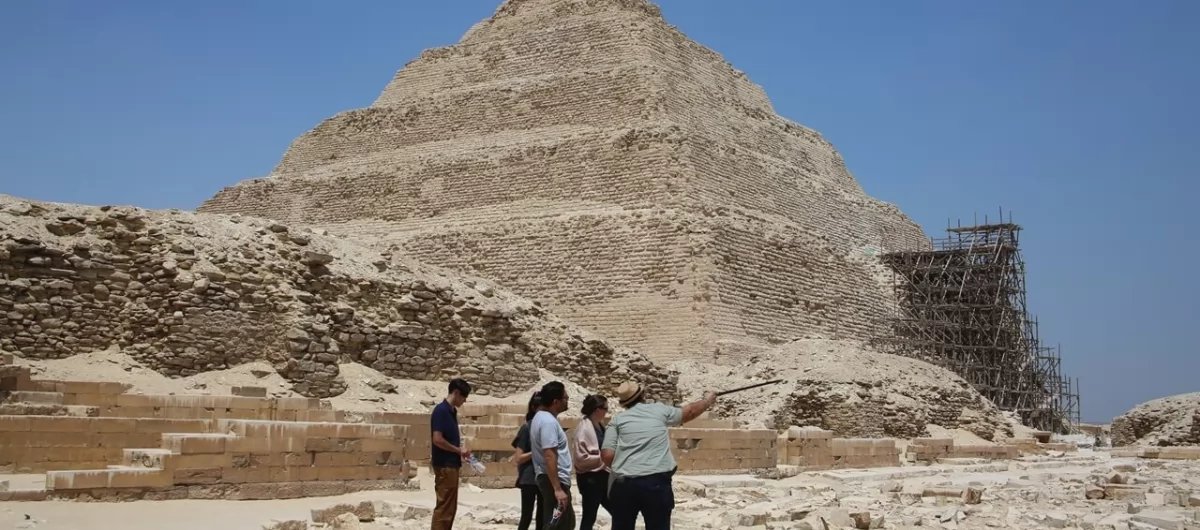
Our clients appreciate a visit to the Step Pyramid of Saqqara and the opportunity to learn about the history of ancient Egypt. Before you visit the inside of the Step Pyramid, read the reviews of our clients:
When my family asked me what my favorite site in Egypt was I couldn't answer them straight away, as there were so many beautiful and breathtaking ones, but I think the most memorable sites would be the Valley of the Kings in Luxor. The tombs were really colorful and stunning. If I'm being honest, my wife convinced me to visit another site that was for the people to see for a small extra fee and to be honest it was worth it, I'm talking about the Step Pyramid in the Saqqara necropolis. The extra fee is to enter it and explore it from inside the pyramid, and I've got to say it was amazing. I can't say I knew much about Egypt before visiting it and now I know way more about the ancient Egyptians and they are fascinating. I can't forget how comfortable and relaxing the Nile cruise was. The ship was luxurious and the staff was super friendly. I couldn't have felt more welcomed than this. Our tour leader and tour guide did an amazing job of fulfilling all our needs and always made sure there's nothing missing and that we were feeling well. I've never felt as safe on a trip as I did on this one. I will most definitely come back again, but this time I have to bring my friends with me.
MARK
Other Sites Nearby
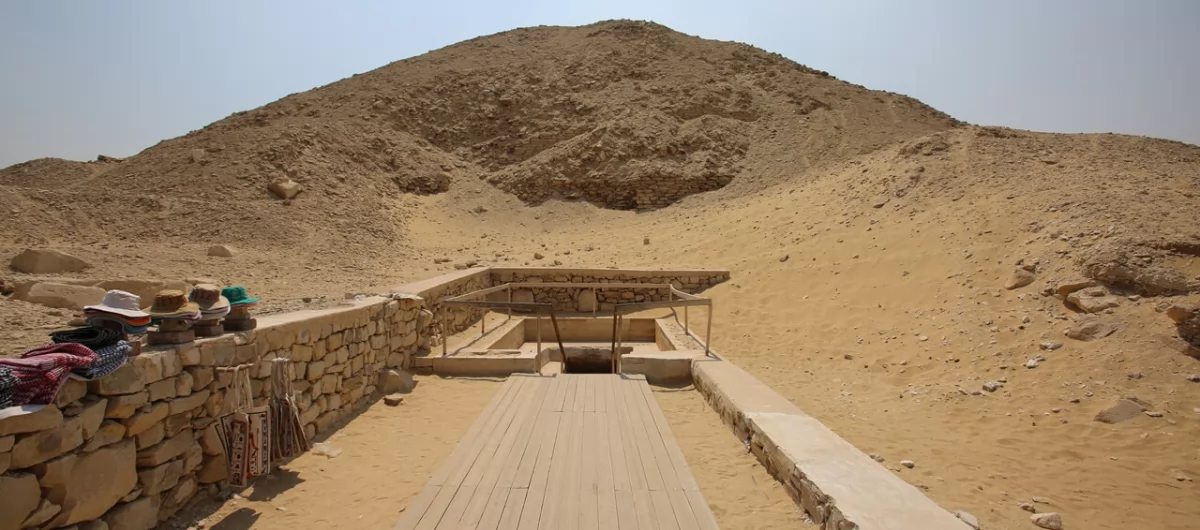
In addition to Djoser's Step Pyramid, the Saqqara necropolis in Egypt is home to several other fascinating attractions and sites. Here are some notable archaeological sites that you can explore to enhance your Egyptian itinerary:
Pyramid of Teti
Located near the stepped Pyramid, Pyramid of Teti is the burial site of Pharaoh Teti, who ruled during the 6th Dynasty. It is one of the best-preserved pyramids in Saqqara and offers a chance to experience the grandeur and architecture of ancient Egyptian pyramids.
Mastaba of Ti
The Mastaba of Ti is an elaborate tomb complex belonging to the high-ranking official Ti, known for his role as an overseer of the pyramids. It features beautifully preserved reliefs depicting scenes from daily life, agriculture, and hunting, providing a unique insight into ancient Egyptian society.
Mastaba of Kagemni
Kagemni was an influential figure in ancient Egypt, serving as a high-ranking official during the reign of Pharaoh Teti in the Old Kingdom. His tomb was constructed around 2300 BCE. The mastaba, a rectangular-shaped structure with sloping sides, is a testament to the architectural skills and artistic achievements of the time. Its walls are adorned with vibrant and well-preserved reliefs, showcasing scenes from everyday life, religious rituals, and depictions of Kagemni himself.
Serapeum
The Serapeum is an underground complex that served as the burial place for the Apis bulls, which were considered sacred in ancient Egyptian religion. The site features massive granite sarcophagi, each weighing several tons, and provides a glimpse into the religious practices and beliefs of the time.
Imhotep Museum
Located near the entrance of the Saqqara necropolis, the Imhotep Museum is dedicated to the life and achievements of Imhotep, the architect who designed Djoser's Step Pyramid. The museum showcases artifacts, statues, and reliefs associated with Imhotep along with other artifacts found in the Saqqara necropolis, providing valuable historical context.
Tombs of the Nobles
Saqqara is also home to several tombs of the nobles, offering a chance to explore the final resting places of high-ranking officials and members of the royal court. These tombs often feature intricate decorations, colorful reliefs, and hieroglyphic inscriptions, providing insights into the lives of the elite during ancient times.
Pyramid of Unas
The Pyramid of Unas is the final resting place of Pharaoh Unas, the last ruler of the 5th Dynasty. It is known for its well-preserved pyramid texts, a collection of religious spells and rituals inscribed on the pyramid walls. Exploring this pyramid allows visitors to delve into the ancient Egyptian funerary rituals and beliefs.
Tomb of Mereruka
The Tomb of Mereruka is one of the largest and most elaborate tombs in Saqqara. Mereruka was a powerful vizier during the 6th Dynasty, and his tomb features beautifully decorated chambers depicting scenes from daily life, including agriculture, hunting, and religious ceremonies.
These additional attractions and sites in the vicinity of Djoser's Pyramid complex offer a wealth of historical and cultural experiences, allowing visitors to deepen their understanding of ancient Egypt and its rich heritage on a Pyramid of Djoser tour.

